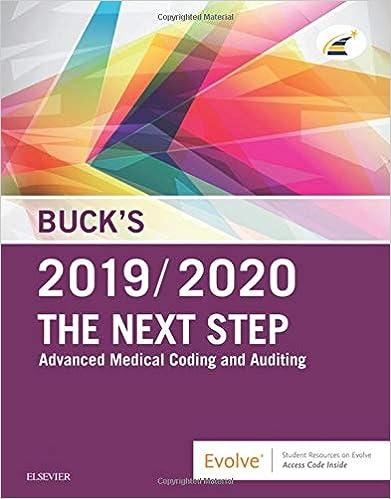Question
The following are independent situations for which you will recommend an appropriate audit report: 1. Subsequent to the date of the financial statements as part
The following are independent situations for which you will recommend an appropriate audit report:
1. Subsequent to the date of the financial statements as part of his post-balance sheet date audit procedures, a CPA learned that a recent fire caused heavy damage to one of a clients two plants; the loss will not be reimbursed by insurance. The newspapers described the event in detail. The financial statements and footnotes as prepared by the client did not disclose the loss caused by the fire.
2. During the course of his audit of the financial statements of a corporation for the purpose of expressing an opinion on the statements, a CPA is refused permission to inspect the minutes of board of director meetings that document significant deci- sions of the board. The corporation secretary instead offers to give the CPA a certi- fied copy of all resolutions and actions involving accounting matters.
3. A CPA is engaged in the audit of the financial statements of a large manufacturing company with branch offices in many widely separated cities. The CPA was not able to count the substantial undeposited cash receipts at the close of business on the last day of the fiscal year at all branch offices. As an alternative to this auditing procedure used to verify the accurate cutoff of cash receipts, the CPA observed that deposits in transit as shown on the year-end bank reconciliation appeared as credits on the bank statement on the first business day of the new year. He was satisfied as to the cutoff of cash receipts by the use of the alternative procedure.
4. On January 2, 2017, the Retail Auto Parts Company received a notice from its primary supplier that effective immediately, all wholesale prices will be increased 10%. On the basis of the notice, Retail Auto Parts revalued its December 31, 2016, inventory to reflect the higher costs. The inventory constituted a material proportion of total assets; how- ever, the effect of the revaluation was material to current assets but not to total assets or net income. The increase in valuation is adequately disclosed in the footnotes.
5. A CPA has completed her audit of the financial statements of a bus company for the year ended December 31, 2016. Prior to 2016, the company depreciated its buses over a 10-year period. During 2016, the company determined that a more realistic esti- mated life for its buses was 12 years and computed the 2016 depreciation on the basis of the revised estimate. The CPA has satisfied herself that the 12-year life is reasonable. The company has adequately disclosed the change in estimated useful lives of its buses and the effect of the change on 2016 income in a note to the financial statements.
6. E-Lotions.com, Inc., is an online retailer of body lotions and other bath and body supplies. The company records revenues at the time customer orders are placed on the Web site, rather than when the goods are shipped, which is usually 2 days after the order is placed. The auditor determined that the amount of orders placed but not shipped as of the balance sheet date is not material.
7. For the past 5 years, a CPA has audited the financial statements of a manufactur- ing company. During this period, the audit scope was limited by the client as to the observation of the annual physical inventory. Because the CPA considered the inven- tories to be material and he was not able to satisfy himself by other auditing proce- dures, he was unable to express an unmodified opinion on the financial statements in each of the 5 years.
The CPA was allowed to observe physical inventories for the current year ended December 31, 2016, because the clients banker would no longer accept the audit reports. However, to minimize audit fees, the client requested that the CPA not extend his audit procedures to the inventory as of the beginning of the year, January 1, 2016.
For each situation, do the following:
a. Identify which of the conditions requiring a deviation from a standard unmodified opinion audit report is applicable, if any.
b. State the level of materiality as immaterial, material, or highly material. If you cannot de- cide the level of materiality, state the additional information needed to make a decision.
c. Given your answers in parts a. and b., state the appropriate audit report from the fol- lowing alternatives (if you have not decided on one level of materiality in part b., state the appropriate report for each alternative materiality level):
(1) Unmodifiedopinionstandard wording
(2) Unmodified opinionexplanatory paragraph
(3) Unmodifiedopinionnonstandard report wording
(4) QualifiedopinionGAAP departure
(5) Qualified opinionscope limitation
(6) Disclaimer
(7) Adverse*
Step by Step Solution
There are 3 Steps involved in it
Step: 1

Get Instant Access to Expert-Tailored Solutions
See step-by-step solutions with expert insights and AI powered tools for academic success
Step: 2

Step: 3

Ace Your Homework with AI
Get the answers you need in no time with our AI-driven, step-by-step assistance
Get Started


